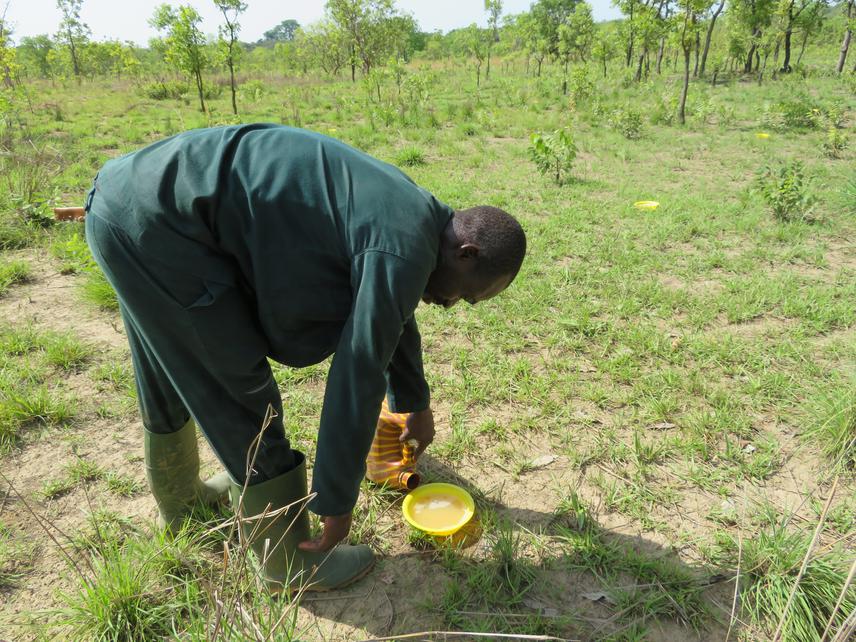Soro Nicodenin Angele
The research objectives of this project are:
(1)to determine bees’ diversity across the Comoé Chimpanzees’ home-ranges;
(2) to determine bees’ species which produce the honey exploited by chimpanzees and the relative frequency of honey exploitation of each bee species by them across the Comoé Chimpanzees’ home-ranges
(3) to determine distribution and density of bee’s species exploited by chimpanzees across the Comoé Chimpanzees’ home-ranges.

Sampling of bees with yellow pan traps.
Invertebrates are included in the diet of many mammals such as primates. They focus mainly on social insects (ants, bees/honey and termites), which offer a large, clumped biomass and/or a high calorific pay-off. Western chimpanzee (Pan troglodytes verus) has been recently declared the most endangered subspecies (critically endangered) by IUCN due to enormous human pressure, poaching and habitat destruction. In Côte d’Ivoire, 90 % decline of the chimpanzee population has been recorded. This project will focus on the importance of the bees’ diversity as ecological factor in the survival of the chimpanzees of savanna of the Comoé National Park. This objective is addressed through the following specific objectives:
(1) to determine bees’ diversity across the Comoé Chimpanzees’ home-ranges;
(2) to determine bees’ species which produce the honey exploited by chimpanzees and the relative frequency of honey exploitation of each bee species by them across the Comoé Chimpanzees’ home-ranges
(3) to determine distribution and density of bee’s species exploited by chimpanzees across the Comoé Chimpanzees’ home-ranges.
The project will be carried out in the South-western sector of the park including areas both sides of the Comoé river because it covers most of the chimpanzees home-ranges. Across these both sides, five habitat types (gallery forest, dry forest, semi-deciduous forest, liana forest, bushy savanna) will be considered. Bees will be sampled using colored pan traps method and method with mixture of honey, salt and water bait. Honey collection tools by chimpanzee will be used as indicator to determine bee nests exploited. At the end of this project we expect to provide scientific information that contributes to a better knowledge of bees’ diversity and understanding of the importance of these insects in Comoé chimpanzees' diet.